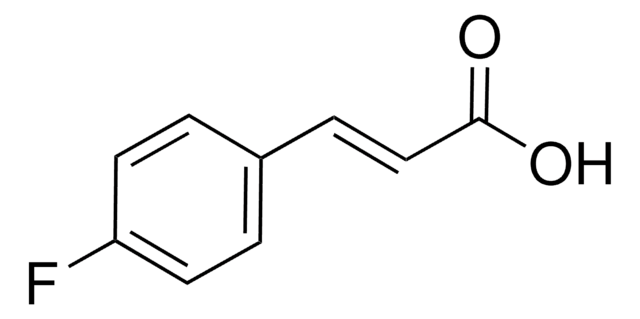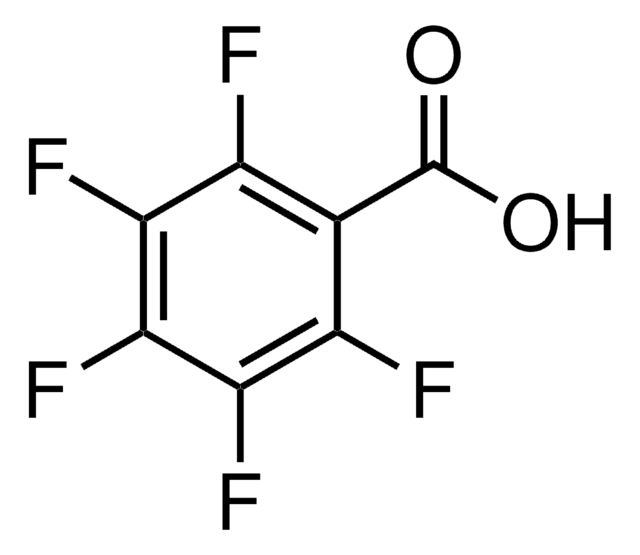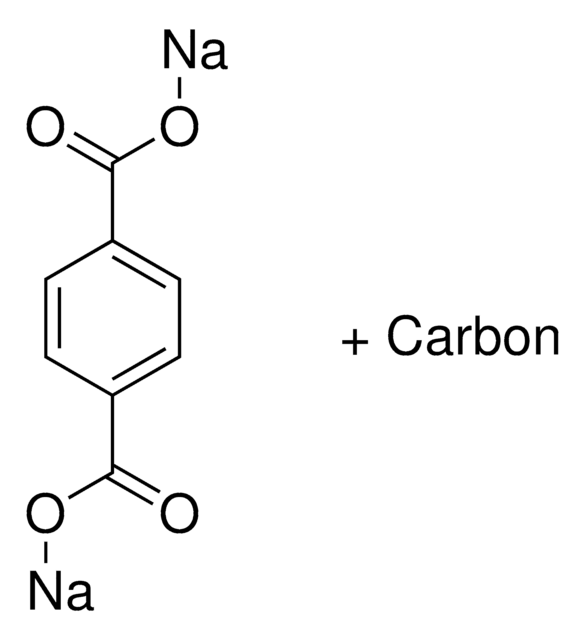Kluczowe dokumenty
38419
α-Cyano-2,3,4,5,6-pentafluorocinnamic acid
matrix substance for MALDI-MS, ≥95.0% (HPLC)
Synonim(y):
2-Cyano-3-(2,3,4,5,6-pentafluorophenyl)-2-propenoic acid, PentaFCCA
About This Item
Polecane produkty
klasa czystości
matrix substance for MALDI-MS
Poziom jakości
Próba
≥95.0% (HPLC)
klasy czynnościowe analitów
drugs of abuse, ionic liquids (quantification)
klasy chemiczne analitów
chlorinated lipids, lipids, peptides, phospholipids, phosphopeptides
metody
collision-induced dissociation MS/MS (CID-MS/MS): suitable
matrix-enhanced secondary ion MS (ME-SIMS): suitable
rozpuszczalność
methanol: 100 mg/10 mL, clear, colorless to light yellow
ciąg SMILES
OC(/C(C#N)=C/C1=C(F)C(F)=C(F)C(F)=C1F)=O
InChI
1S/C10H2F5NO2/c11-5-4(1-3(2-16)10(17)18)6(12)8(14)9(15)7(5)13/h1H,(H,17,18)/b3-1+
Klucz InChI
LYNQRDIQUFMLTI-HNQUOIGGSA-N
Szukasz podobnych produktów? Odwiedź Przewodnik dotyczący porównywania produktów
produkt powiązany
Hasło ostrzegawcze
Warning
Zwroty wskazujące rodzaj zagrożenia
Zwroty wskazujące środki ostrożności
Klasyfikacja zagrożeń
Acute Tox. 4 Dermal - Acute Tox. 4 Inhalation - Acute Tox. 4 Oral - Eye Irrit. 2 - Skin Irrit. 2 - STOT SE 3
Organy docelowe
Respiratory system
Kod klasy składowania
11 - Combustible Solids
Klasa zagrożenia wodnego (WGK)
WGK 3
Temperatura zapłonu (°F)
Not applicable
Temperatura zapłonu (°C)
Not applicable
Wybierz jedną z najnowszych wersji:
Certyfikaty analizy (CoA)
Nie widzisz odpowiedniej wersji?
Jeśli potrzebujesz konkretnej wersji, możesz wyszukać konkretny certyfikat według numeru partii lub serii.
Masz już ten produkt?
Dokumenty związane z niedawno zakupionymi produktami zostały zamieszczone w Bibliotece dokumentów.
Nasz zespół naukowców ma doświadczenie we wszystkich obszarach badań, w tym w naukach przyrodniczych, materiałoznawstwie, syntezie chemicznej, chromatografii, analityce i wielu innych dziedzinach.
Skontaktuj się z zespołem ds. pomocy technicznej




![trans-2-[3-(4-tert-Butylphenyl)-2-methyl-2-propenylidene]malononitrile matrix substance for MALDI-MS, ≥99.0% (HPLC)](/deepweb/assets/sigmaaldrich/product/structures/249/587/f8021369-f65a-413d-887d-3c8a4d2a248f/640/f8021369-f65a-413d-887d-3c8a4d2a248f.png)



